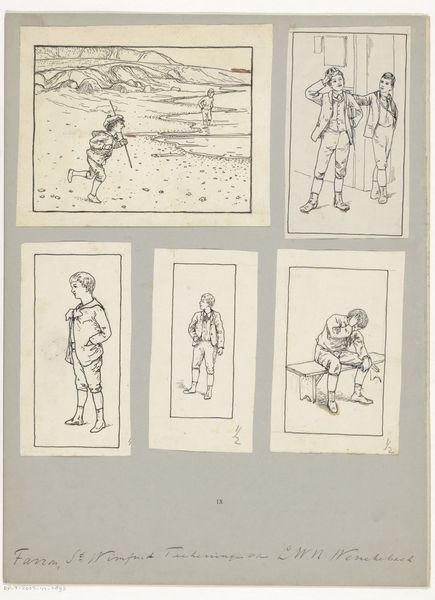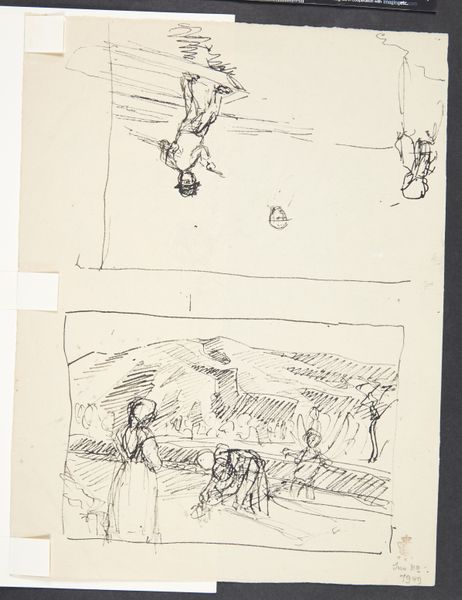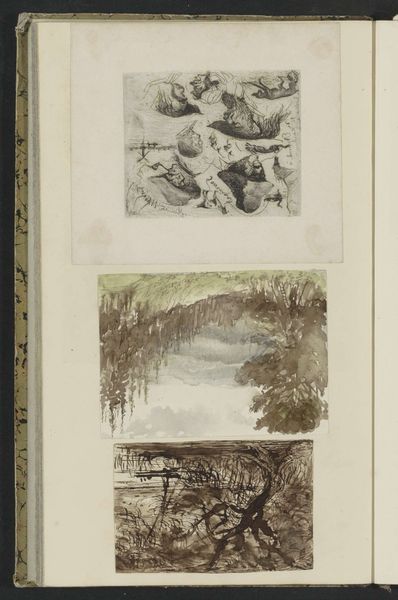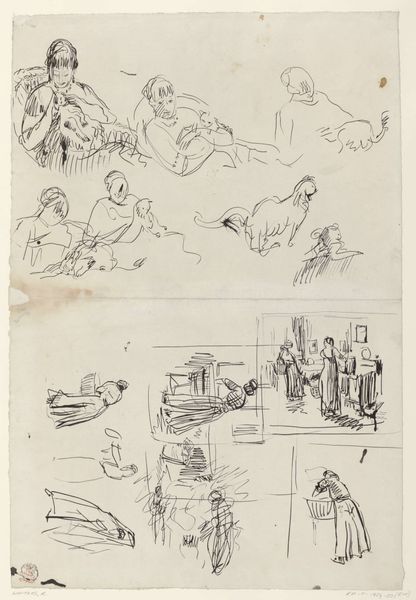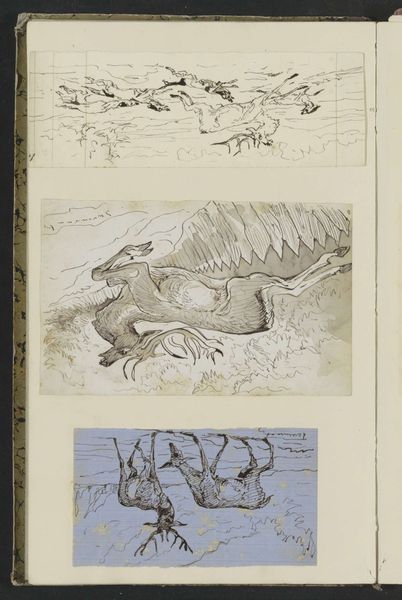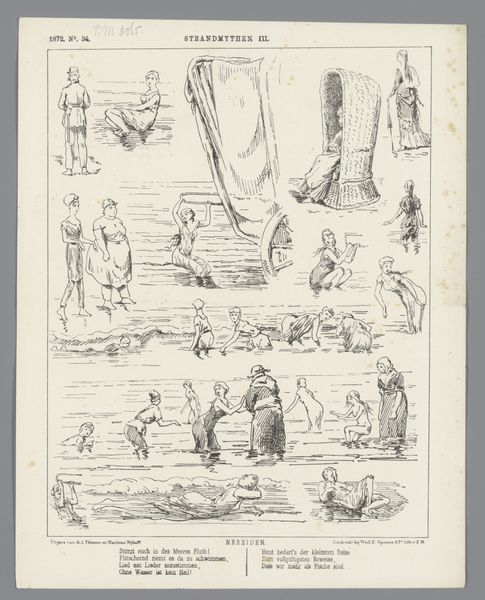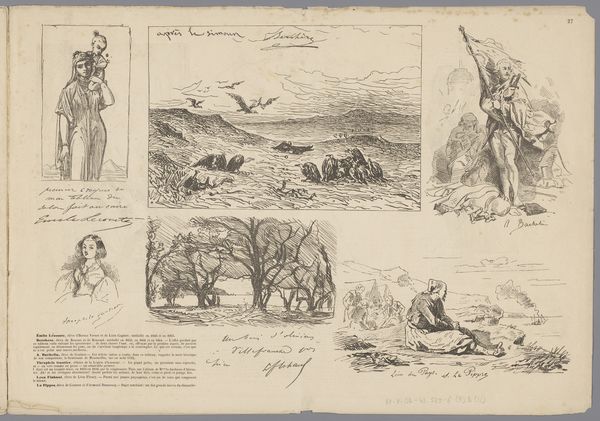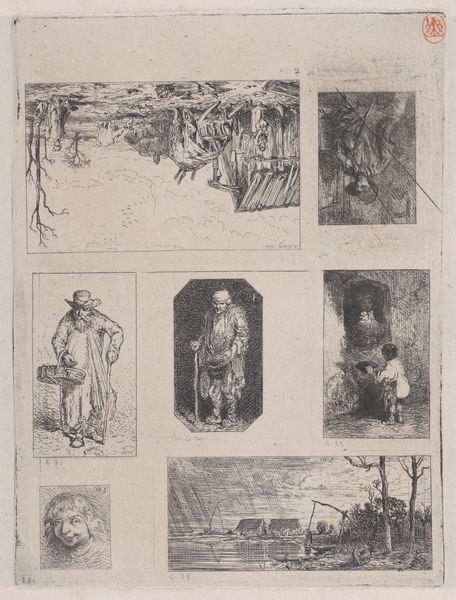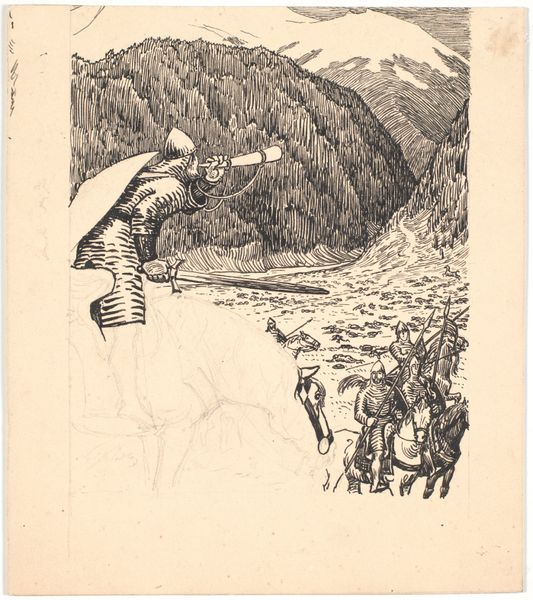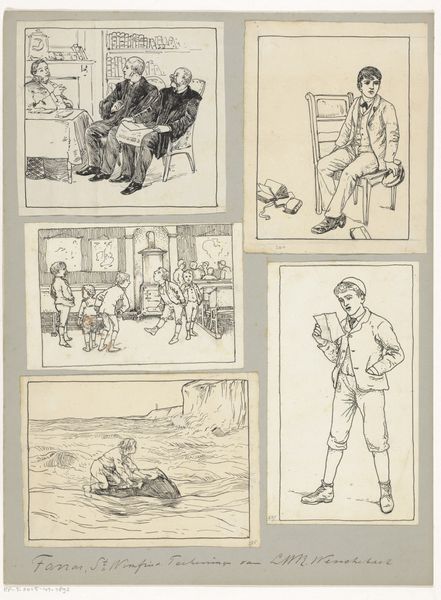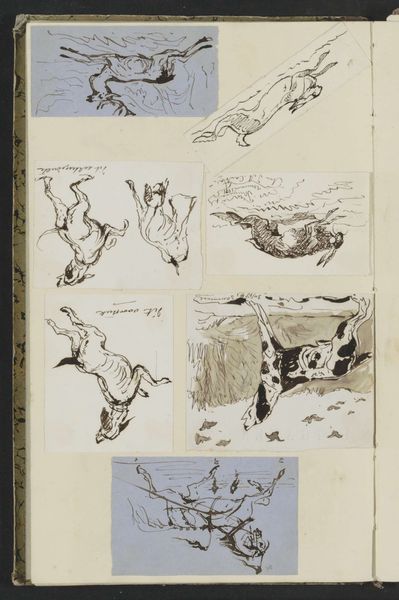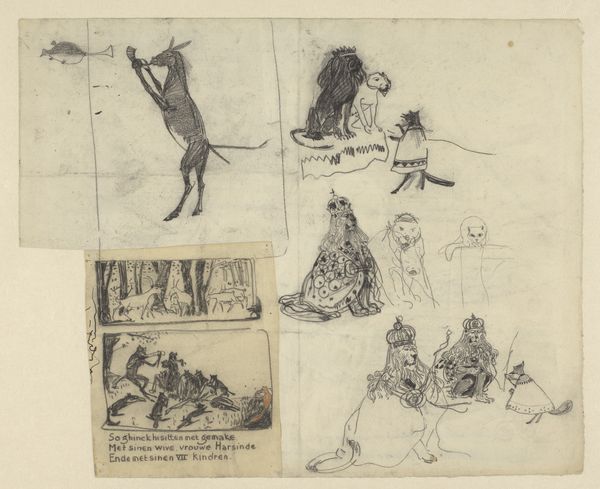
Dimensions: height 366 mm, width 274 mm
Copyright: Rijks Museum: Open Domain
Editor: This artwork, titled "Drie scènes met jongens en een berglandschap," by Willem Wenckebach, was created before 1894. It uses ink on paper to present several small scenes. It’s interesting how these very different drawings are grouped together. How do you interpret this combination? Curator: I'm immediately drawn to the stark contrast in the mode of production. We have finely rendered ink drawings alongside a landscape sketch. Consider the socioeconomic implications: what access did the artist have to materials? How might this access have informed the narrative within each scene, from domestic spaces to panoramic views? Editor: That's a great point! I was focusing on the content of the images but didn't consider how the actual *making* of them connects to that content. Do you think the variation in the ink work impacts how we should consider them together? Curator: Absolutely. The precision of the figurative drawings suggests a certain level of formality or perhaps even commissioned work, while the landscape feels more immediate, a quick study. Perhaps these were studies intended for different purposes but grouped together due to economic realities and material limitations. The paper itself, a shared resource, then becomes the connecting tissue. Editor: That's fascinating. So instead of viewing them as disparate scenes, we can see them as connected by the constraints and resources available to the artist. Curator: Precisely. It challenges the notion of artistic genius as existing independently from the material conditions of its creation. These drawings highlight the labor, material and means of production of this artist in their historical context. Editor: Thanks for sharing those observations. I hadn’t thought about the drawings this way at all, but your focus on materials really opened my eyes. Curator: And your initial read allowed us to ground the analysis into an artwork on display! That’s the point, isn’t it?
Comments
No comments
Be the first to comment and join the conversation on the ultimate creative platform.
